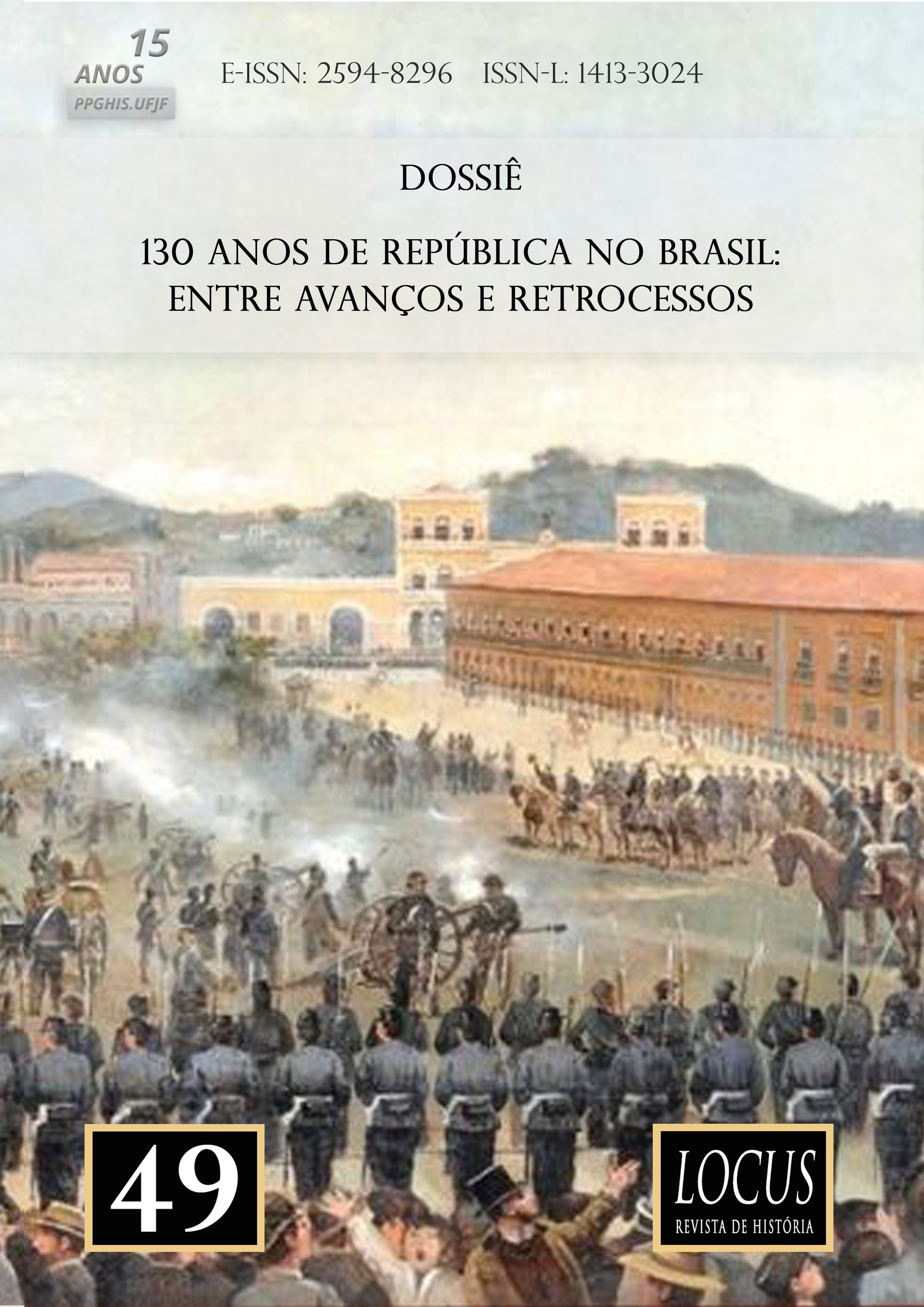Algunos aspectos de la revolución rusa en las páginas de revistas ilustradas en el Brasil republicano
Publicado 2019-12-05
Palabras clave
- Revistas Ilustradas,
- Representaciones,
- Revolución Rusa
Cómo citar
Resumen
El artículo analiza las diferentes lecturas de los eventos que llevaron a la toma del poder por los bolcheviques en la Revolución Rusa de 1917 en las revistas ilustradas brasileñas, analizando las representaciones en las imágenes y textos de la prensa que circulaban principalmente en la capital de la recientemente proclamada República Brasileña. Las representaciones especialmente elaboradas por las revistas ilustradas contribuyeron a la formación de "visiones" y diferentes interpretaciones sobre lo que sucedió en esos meses de guerra y revolución. Imágenes y discursos que nos permiten analizar la construcción de un discurso singular sobre la historia en las páginas de las revistas de la República de Brasil. ¿Cómo presentaron la revolución rusa de 1917 la revista Careta, Fon-Fon, O Malho, Eu sei tudo, A Leitura para todos, Para Todos y A Revista da Semana? ¿Cuál fue el tipo de información difundida en tales revistas? ¿Y hasta qué punto la calidad de esta información difiere de otras fuentes, como los periódicos de los trabajadores o los diarios de la gran prensa de la época? ¿Cuál es la contribución de las revistas ilustradas para comprender cómo las noticias y los hechos sobre Rusia llegaron a Brasil y se difundieron? ¿Cuáles son los principales temas tratados por las revistas cuando se trata el tema de la Revolución Rusa? ¿Qué se destaca?
Descargas
Citas
- DANTAS, Sérgio Augusto de Souza. Antonio Silvino, o cangaceiro, o homem, o mito. São Paulo: Editora Cartigraf, 2006.
- FERREIRA, M. “A geração do demônio: um estudo sobre o imaginário anticomunista baiano”. Revista Binacional Brasil Argentina, Vitória da Conquista, v.2, n. 1, julho de 2013.
- FERRO, Marc. O ocidente diante da Revolução Soviética: a história e seus mitos. São Paulo: Editora Brasiliense, 1984.
- GAY, Peter. A cultura de Weimar. Rio de Janeiro: Paz e Terra, 1978.
- HOBSBAWM, Eric. A Era dos extremos: o breve século XX (1914-1991). São Paulo: Companhia das Letras, 1995.
- MACIEL, Laura Antunes. “Produzindo notícias e histórias. Algumas questões em torno da relação telegrafo e imprensa (1890-1920)”. In: FENELON, Déa et ali. Muitas memórias, outras histórias. São Paulo: Olhos d´água, 2004.
- MAIA, Andrea Casa Nova (Org.), CARDOSO, Luciene Carris e SANTOS, Vicente S. M. dos. Russos em revista: a Revolução Russa nas revistas ilustradas brasileiras. Rio de Janeiro: Gramma, 2018.
- MARTINS, A. L; LUCA, T. R. de. (Orgs.). História da imprensa no Brasil. São Paulo: Contexto, 2008.
- McCAULEY, M. Who’s who in Russia since 1900. Londres: Routledge, 1997. https://doi.org/10.4324/9780203284100
- MOTTA, Rodrigo Patto Sá. Em guarda contra o perigo vermelho: o anticomunismo no Brasil. São Paulo: Editora Perspectiva/Fapesp, 2002.
- OLIVEIRA JUNIOR, Romulo José Francisco de. “Como se consagra um mito. Representações do cangaceiro Antonio Silvino nos cordéis de José Costa Leite”. Revista Tempo Histórico, vol.5, n. 1.
- REIS FILHO, Daniel Aarão. As revoluções russas e o socialismo soviético. São Paulo: UNESP, 2003. https://doi.org/10.7476/9788539302703
- RÉMOND, René. O século XX: de 1914 aos nossos dias. São Paulo: Cultrix, 1976.
- SEGRILLO, A. “Historiografia da Revolução Russa: antiga e novas abordagens”. Projeto História, v. 41, p. 65, dez. 2010. Disponível em: . Acesso em: 10 jul. 2017.


